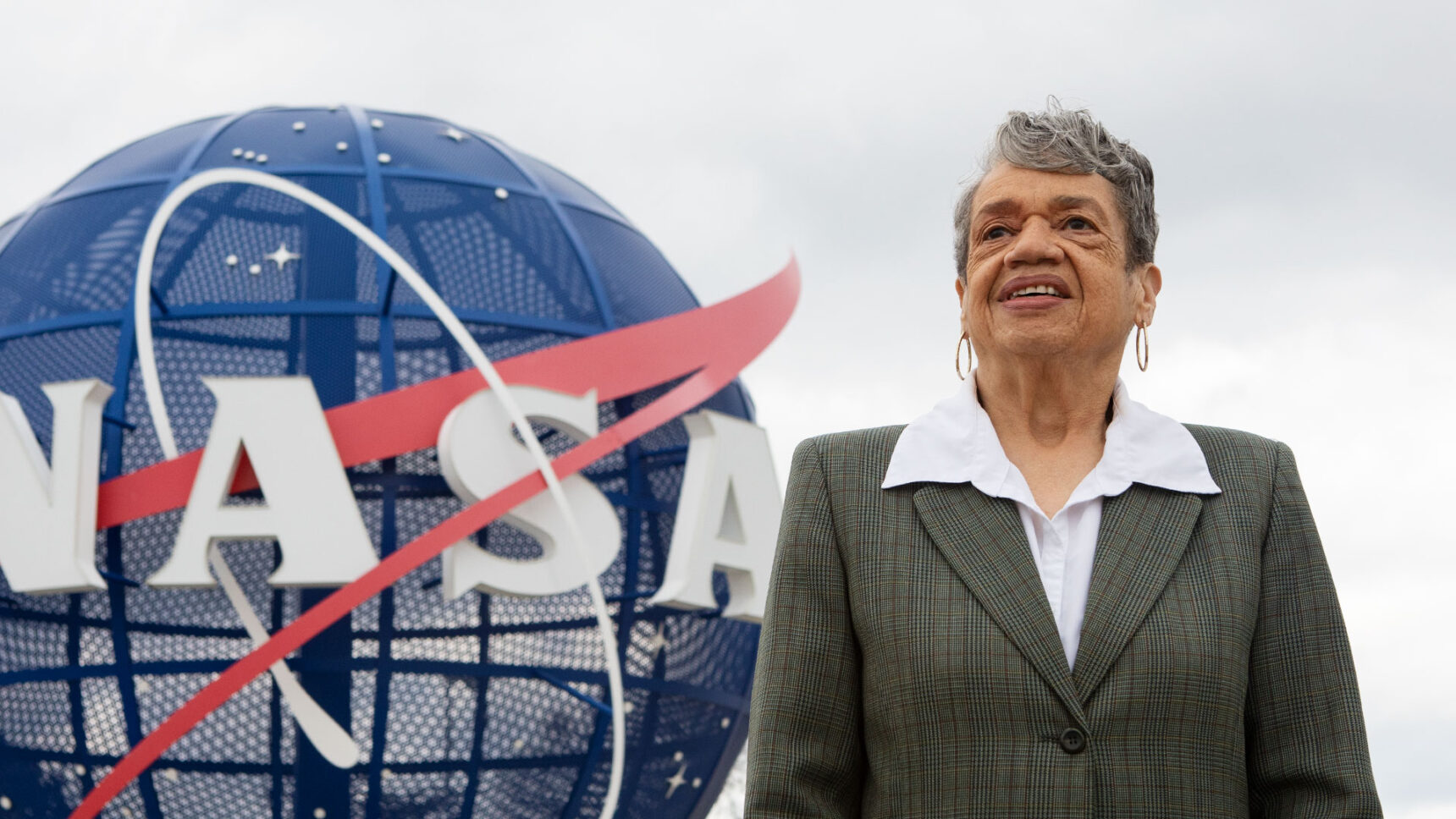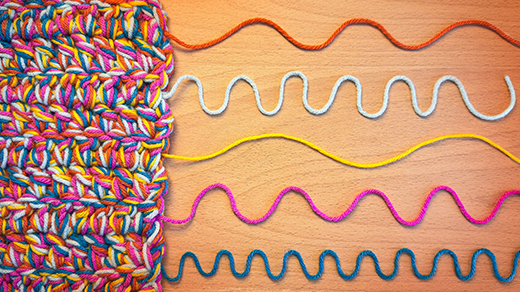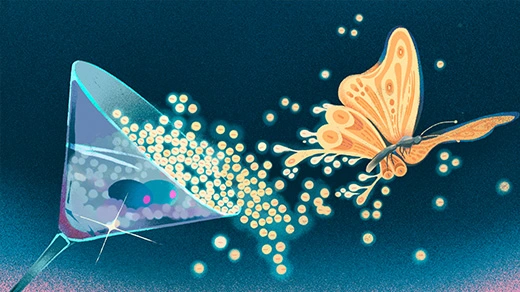The NASA Engineer Who’s a Mathematician at Heart
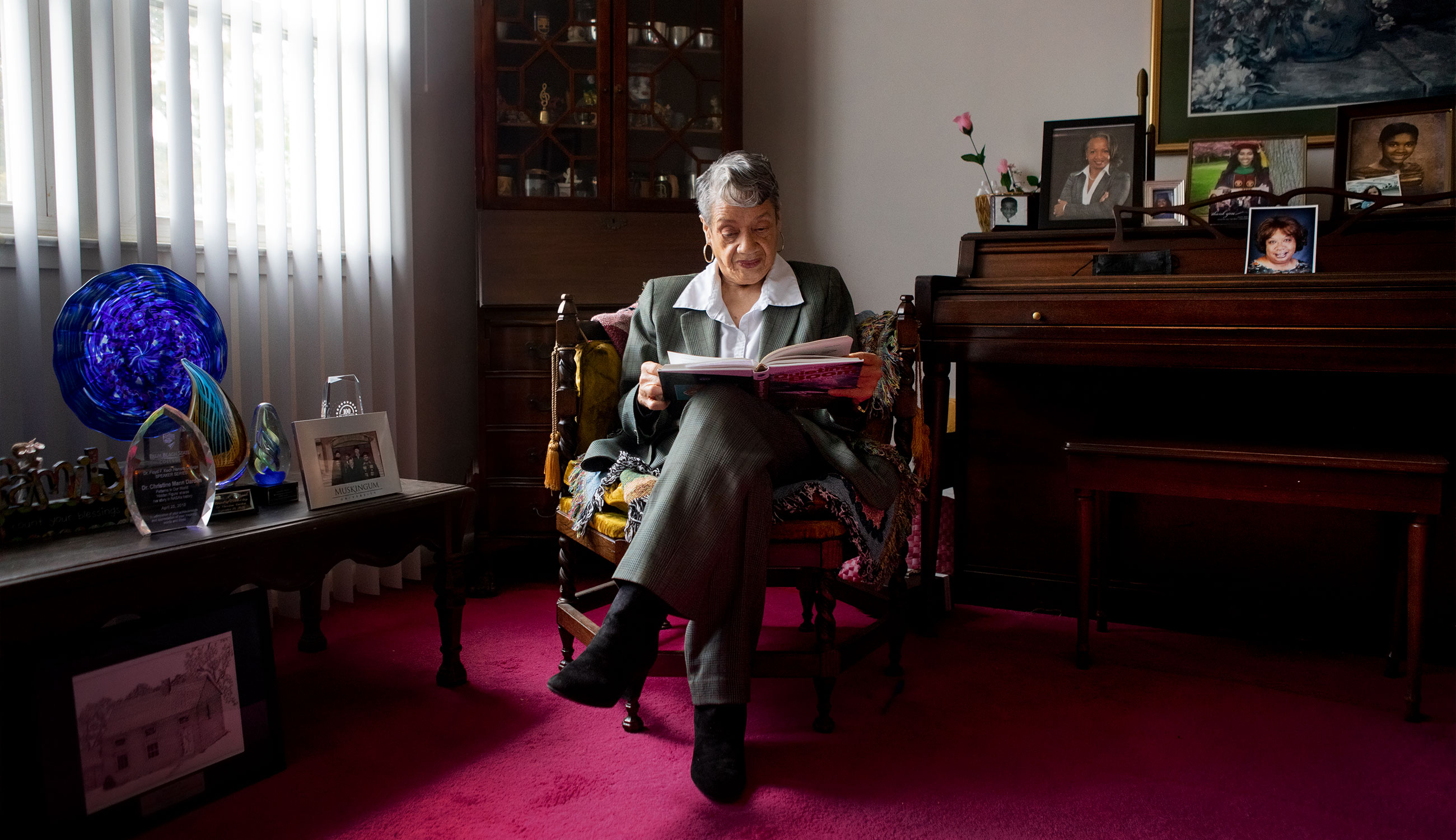
Christine Darden reads an engineering book at her home in Hampton, Virginia. As a NASA engineer, she worked on making supersonic planes quieter.
Julia Rendleman for Quanta Magazine
Introduction
Just before World War II, the American civil rights activist A. Philip Randolph persuaded President Roosevelt to end discrimination on the basis of race, color and national origin in defense-industry employment. Not long after, in 1941, Roosevelt issued executive order 8802, prompting several agencies, including the National Advisory Committee for Aeronautics — NACA, the precursor to NASA — to begin hiring Black workers.
That paved the way for Christine Darden, who earned a master’s degree in mathematics at a historically Black university in 1967 and was hired into NASA’s all-female pool of “human computers” at the Langley Research Center. However, she soon discovered that her role as a mathematician was limited to performing time-consuming calculations by hand. To do the creative mathematical work she craved, Darden needed to recast herself as an engineer.
Darden transferred to NASA’s male-dominated engineering division and later earned an engineering doctorate. She went on to lead the Sonic Boom Group of NASA’s High-Speed Research Program, though she never stopped thinking of herself as a mathematician. “Despite my doctorate, I probably have more of a mathematics background,” she said. “I really enjoy the story of what these mathematical equations do in the physical world.”
Her groundbreaking work laid the foundation for a new era of research on experimental planes (known as X-planes) that NASA launched in 2016. The goal has always been to accelerate the adoption of quieter, greener, safer, faster and more efficient planes — even supersonic ones, which travel faster than sound.
The fundamental problem she worked on, the sonic boom, begins when an airplane pushes air molecules out of the way as it flies. This creates an invisible, cone-shaped pressure field whose tip is on the aircraft’s nose and whose sides surround the plane. The cone moves with the plane and emits a series of pressure waves that travel at the speed of sound. As the plane speeds up, these waves get closer together. Should the plane exceed the speed of sound — dubbed Mach 1 — the waves coalesce into a potentially destructive shock wave called a sonic boom.
“It sounds like a sharp thunderclap,” said Darden, who published more than 50 papers on high-lift wing design in supersonic flow, flap design and sonic boom prediction and minimization.
Darden retired from NASA in 2007 after a 40-year career. She was featured in Margot Lee Shetterly’s 2016 book Hidden Figures, alongside Katherine Johnson, Dorothy Vaughan and Mary Jackson — three Black women mathematicians at NASA who made significant contributions at pivotal moments in the space race. All four women were awarded Congressional Gold Medals in 2019 for their scientific contributions.
Quanta Magazine spoke with Darden recently about her experience working for NASA, how to make fast planes quieter, and her surreptitious visits to speak with schoolchildren and Girl Scouts. The interview has been condensed and edited for clarity.
Have you always been interested in math and science?
My mother tells the story of giving me a talking doll when I was 5. She was disappointed because, instead of playing with the doll, I cut it open to see why it talked. I also helped my dad work on his car and change the oil. When girls were inside playing, I was in the street, bicycle riding, skating and racing with the boys.
We lived in Union County, North Carolina, right outside of Charlotte. My mother taught in a two-room school. When I turned 4 [in 1946], Mother took me to school with her. She said I could play outside, but who was I going to play with? I stayed and did the first grade work. [At the year’s end], she promoted me to second grade.
When did you turn to space and aeronautics?
I was in high school on October 4, 1957, when Sputnik launched. I felt the country’s excitement that Russia beat us into space. Also, I attended college in Hampton, Virginia, near NACA. John Glenn’s parade rode by campus. So there was certainly that influence too.
How did you first come to work at NASA?
After graduating with my master’s degree in applied mathematics [in 1967], I was hired as a data analyst in the high-speed aeronautics division. We were female mathematicians who helped the male engineers create documents about wing and airflow shapes for the military and airplane companies. The engineers had slide rules and mechanical calculators but didn’t like doing calculations. So the head computer assigned young ladies to do the work.
It wasn’t creative, though we drew figures. I still have some of the French curves I was given to draw smooth lines through my data points.
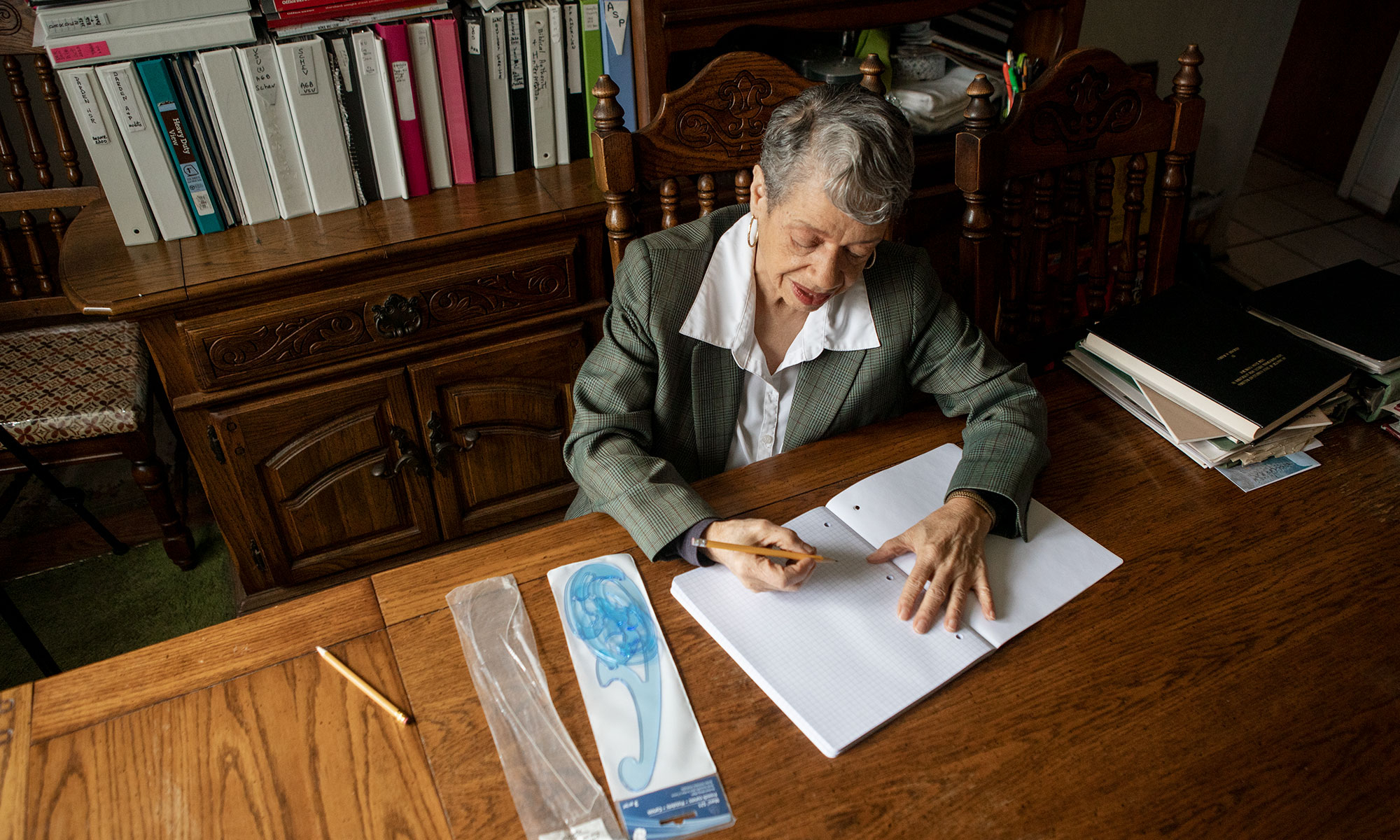
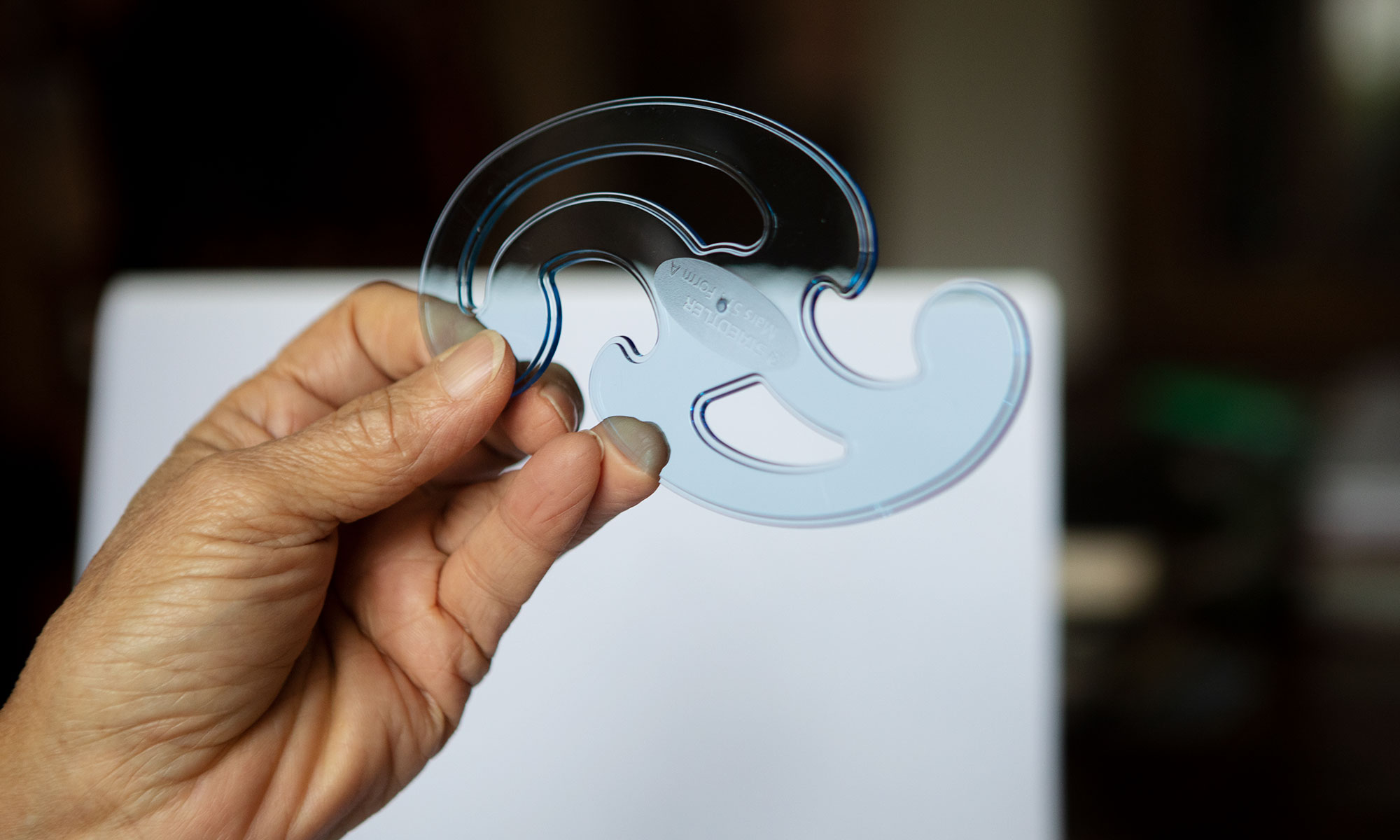
Darden still has the drafting tools she used in NASA’s early days to plot data points, such as this French curve.
Julia Rendleman for Quanta Magazine
What was it like? Did you ever talk with the male engineers in those early years?
Yes, I often did after getting an assignment. Once, an engineer asked me to complete his work by writing a computer program. It was an interesting assignment. When I finished, he said my program gave incorrect answers. I reviewed and ran it again. He laughed and said, “That’s still not right.”
I didn’t like the laugh. My work wasn’t wrong. I looked at the work he had done prior to giving me the assignment and found one sign error. When I corrected his mistake and ran the code again, the numbers looked good.
Was he gracious?
No. But he didn’t laugh anymore.
Was that something of a wake-up call for you?
Well, I later asked a friend why all of the men were in engineering and all of the women were in computing. I thought it was because we had math degrees and they had engineering degrees. But she told me that some male engineers had math degrees.
I wanted to be in engineering. Men in engineering did research, gave talks, wrote and published papers, and got promoted. The women, on the other hand, followed the engineers’ orders. Sometimes they didn’t even know what they were working on. They didn’t give talks, weren’t recognized on papers even when they helped, and didn’t get promoted.
During that time, did you know the other “hidden figures,” or their work?
Dorothy Vaughan lived down the street from me. She started in 1943, so she was 24 years ahead of me. Mary Jackson and Katherine Johnson were 15 years ahead of me. Katherine’s daughter was my classmate [growing up]. Katherine and I sang together in church for 50 years. I went by her office a couple of times. I met some of the men who she worked with. However, I never read anything at NASA about what she or the others did as their work was really hidden. I learned about their work in Hidden Figures.
So how did you end up escaping that smaller role in computing?
I asked for a transfer to engineering, which my supervisor said was impossible. So I went to the director and asked why males and females with the same background were assigned different jobs. He said, “You know, nobody ever asked me that question before.” I said, “Well, I’m asking it now.”
Three weeks later, I got promoted to engineering.
Did other women follow you?
I talked to some of the ladies in the office, but they weren’t interested. Maybe they weren’t outgoing. Of course, Mary Jackson was outgoing. One of the engineers had suggested that she go to a segregated high school to get credentials so that NASA would let her work in the wind tunnel. She did that and worked in the wind tunnel, but never got promoted there.
What was your first engineering assignment?
My supervisor asked me to program the equations from a paper on sonic boom minimization. The authors had assumed an isothermal atmosphere — [meaning temperature was constant throughout] — but I put the real atmosphere into the code. Eventually, I published on the topic. I also started working on my mechanical engineering doctorate because I didn’t want anybody saying I couldn’t do that job.
Once I finished the computer program, we input variables such as the airplane’s length, weight, altitude and Mach number. The output gave the equivalent area distribution [for the design of a plane that allowed us to minimize the boom]. With that, we started designing planes.
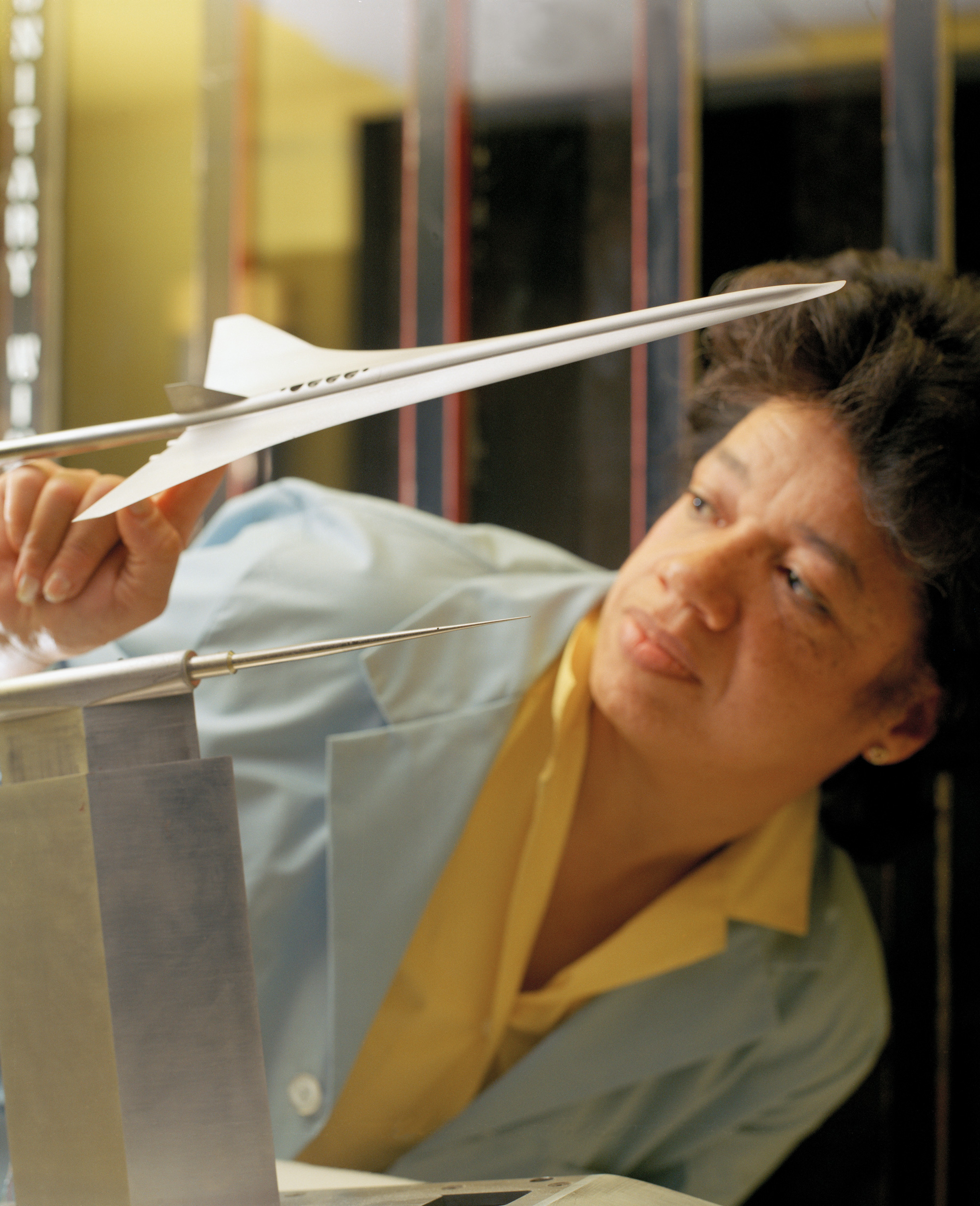
Supersonic planes could transport passengers and cargo at tremendous speed, but the sonic booms they leave in their wake are extremely disruptive. Darden’s work has helped lessen their impact and is still being used in new experimental planes.
NASA, Sandie Gibbs
Did any working airplanes use your designs?
In the wind tunnel, the difference in pressure inside and outside of the pressure cone had been much smaller for our design than for the baseline plane. However, we needed to fly over people to get feedback about how people would tolerate the minimized boom. Boeing ran a test flight over Chicago and Oklahoma City. Once they started, people called to report damage to sheetrock, windows and the good china in their homes. After that, [in 1971] the U.S. canceled the program and outlawed commercial supersonic flights over land. That law is still there.
But supersonic transport remained very popular. Eventually, in the late 1980s, Congress offered money to address the supersonic boom’s environmental concerns, which include noise and the boom itself, but also possible ozone destruction. They asked that I gather everybody in the U.S. researching the sonic boom for a two-day national meeting at Langley.
I led the design and operational plan of the research program [that resulted]. We did years of testing in our wind tunnels to show what worked. Then DARPA borrowed two F5 supersonic Air Force planes for a test around 2002 over the Mojave Desert. They built and pasted panels onto one of the planes so that it matched the equivalent area distribution from our computer program. The other F5 stayed the same. When the F5 with no changes was flown, you could hear people in the control room shouting because of the loud boom. But the demonstrator plane — the one with the panels on it — had a much softer boom. It worked!
I retired shortly after that, but much later, in 2018, NASA gave a contract to Skunk Works, Lockheed Martin, to build QueSST — a good, low-boom supersonic X [demonstrator] plane. They’re working on it now. It has such a long nose that it uses external vision to land the plane. They expect the boom to sound like a thump.
But what about the law prohibiting commercial supersonic flights?
They’ll do flight tests and get feedback on the noise. Then NASA will present the data to the FAA to request a rule change. They’re also talking to other world noise agencies to change laws so that supersonic planes can fly around the globe.
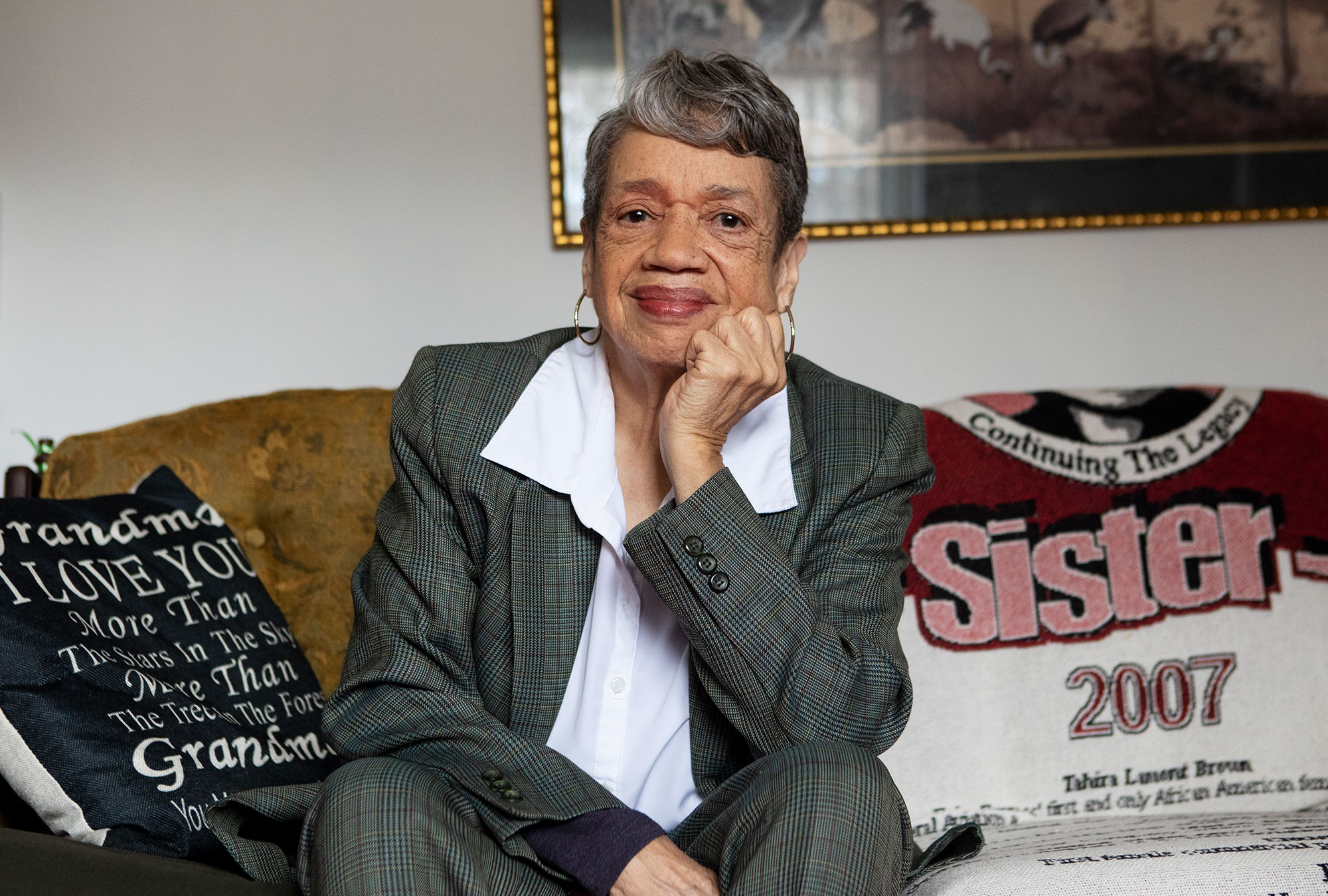
Darden was featured in Margot Lee Shetterly’s book Hidden Figures, and she speaks to youth groups about the importance of her work and making sure girls know what they’re capable of.
Julia Rendleman for Quanta Magazine
Another big legacy of your work — the book Hidden Figures — also happened after you retired. How did that come about?
Margot’s father and I worked together, and we’d bring our children to Langley’s big spring picnic. So I first met Margot when she was a girl. Later, Margot was working on Wall Street but wanted to write — her mother taught English and had worked with Margot on her writing.
One day Margot and her husband visited her parents. They were riding to church when her dad said, “Oh, look, Margot, there’s Miss So-and-so,” [a Black woman the family knew]. “She was a computer at Langley and your Sunday school teacher.” Then her dad talked about the Langley computers. Margot’s husband said, “Well, if the Langley computers did all that, how come I’ve never heard of them?” And Margot thought, “Maybe I should write that book.”
That’s when she called me. Soon, it got so that every time she came to town, we had lunch. Once, I mentioned The Warmth of Other Suns, by Isabel Wilkerson, a book about Black migration patterns to the North and West told through three people. It was a great story and great history book. And so Margot put both personal stories and history in her book.
Now you’re a public figure, often speaking to student groups and Girl Scout troops. Did you do this before the book?
Yes, but when I first met Mary Jackson [when we were both still at NASA], she told me, “Do you know that I got a poor performance appraisal because my supervisor said I spent too much time visiting schools?” Remember, she never got promoted there.
When she told me that, I said, “OK, the next time I go, I’ll tell nobody where I’m going. I’ll just say I’m going out for an hour.” Of course, within a few years they were giving awards for people who visited schools.
In recent years, I’ve been talking to students all over the country. Invariably, the young women come up and say, “We didn’t know women did work like that!” Girls need to know that women do this work.
